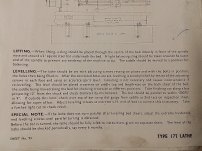What would the same property be now though?Different areas different prices
This is from the NW Kent ''commuter'' village I grew up in's website, and one of the same houses as my parents
21 Apr 1961 House for Sale at Woodland Avenue Tonbridge Free Press (KM)
(Advert) "Hartley - Detached freehold bungalow, 1 reception, 3 bedrooms, kitchen, bathroom, garage, good garden, £3,950. Dunedin, Woodland Avenue, Hartley, Dartford." [Dunedin is now called Bracondale]
P.S. We were quite comfortably off middle class - until my father ''lost the lot'' because he wasn't the businessman he thought he was !!
The home counties have long been way above the average price.







